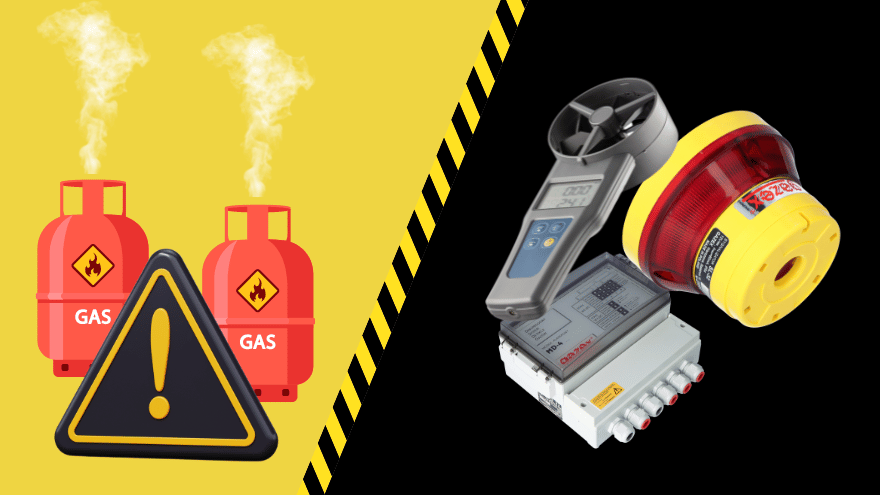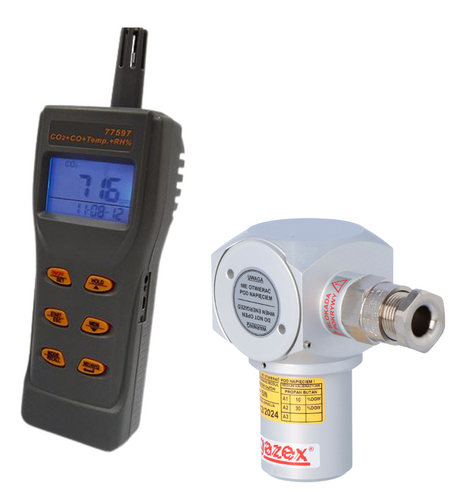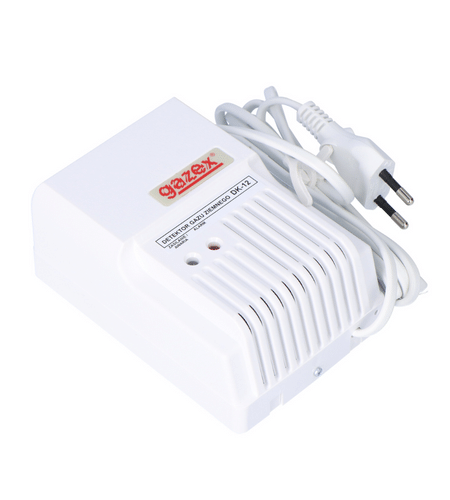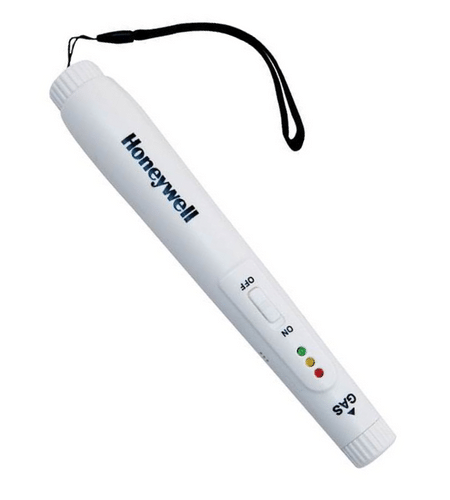The gas sensor is an inconspicuous device, but it plays an important and very responsible role. Human health and life may depend on its precise installation and correct operation, so the choice and purchase of the right product should be approached seriously, putting the price of the detector in last place. How to find the right solution? Check!

Gas detectors are one of the basic elements of protective equipment for every boiler room, underground garage, underground parking lot, industrial plant, housing construction and commercial or public buildings, such as shopping malls, schools, hospitals, railway stations, airports, office buildings, etc. Choosing the right one equipment and adapting it to specific environmental conditions is crucial not only for the security of the building, but above all for the health and life of residents and employees . For people looking for high-quality gas detectors, we have prepared an overview of the best devices.
What to pay attention to when choosing a gas detector/meter
Although at first glance all gas sensors may look similar, they differ in terms of operating parameters and available functions . When choosing a detector for your plant, pay attention to the following aspects:
Sensor type – both single-function and dual-function devices, and even 3-in-1 solutions, are available on the market. The detector can monitor only the gas concentration (natural or propane-butane) or also detect carbon monoxide and/or smoke. Choosing the right solution should depend on the type of business you run, but it may be better to have a device with too many functions than one with too few.
Measurement frequency – the higher this parameter, the faster the threat will be detected. This can be compared to the sampling rate of a digital audio file - the higher it is, the higher the quality.
Sensitivity – the ratio of the response to the amount of sample. It determines its minimum that triggers the detector's response. 
Dynamic range – informs about the concentration of the sample allowing for quantitative analysis.
Power supply – you can choose from batteries, built-in battery or mains power. The first two solutions provide greater freedom of use, but the latter is characterized by a higher level of reliability, which should be a basic determinant in industrial installations.
Functionality guarantee – the longer the warranty period for the device, the greater the peace of mind of the user, and therefore usually the entrepreneur.
Possibility of testing – a special button for testing the sensor's efficiency may be useful. Regular inspections will increase the safety of the plant and its employees.
Signaling method - due to the diverse conditions of use of sensors, in the event of a threat, they should emit a sound and light signal. You can also find detectors on sale connected to a mobile application, informing about disturbing concentrations via notifications. This solution allows you to monitor the safety of the plant even outside its working hours.
Brand and price – to guarantee the effectiveness and failure-free operation of the sensor, it is worth choosing devices from well-known and reputable manufacturers, such as Gazex or Famas . The price should definitely be of secondary importance - in the case of detectors, it will not be a problem for the production plant's budget.
At what height should the gas sensor be installed?
It is best to install the gas sensor at the eye level of a standing adult . You should choose a place where the operation of the device will not be disturbed - installing the detector in the immediate vicinity of windows or doors is a bad idea due to the constant supply of fresh air and drafts.
It is worth remembering that the gas detection system works well if the device is selected taking into account the conditions in the monitored room (including temperature, humidity, presence of interfering gases and measurement range). The gas sensor must be placed in the right place - where the gas source is. The device must be installed carefully and in accordance with the manufacturer's instructions. It is very important to adhere to the deadlines for calibrating detectors, checking the operation of systems and (where necessary) replacing batteries.
Professional gas detectors - top 5 best products
When choosing a natural gas sensor for industry, check out the offer of detectors and meters available in our online wholesaler. The most popular devices include the following models:
Gazex DK 12 home natural gas detector
- Gazex DK 12 home natural gas detector detects methane;
- alarm 15% LEL (lower explosive limit);
- out for external siren + out valve control;
- pp sensor, 230 V power supply (for home use);

Famas Maxi/K-GP microprocessor gas detector
- universal home gas detector Famas Maxi/K-GP Maxi/K-GP detecting methane and propane-butane with light and sound signaling;
- Polish production;
Aisko VZ7291 explosive gas meter
- Aisko VZ7291 explosive gas meter (methane, propane) is a very sensitive device designed to check the tightness of gas installations, detect and locate damage to gas installations and devices, check the tightness of liquid gas cylinders, etc.;
- allows you to easily reach inconvenient places;
- a device equipped with a flexible probe 450 mm long, acoustic signaling and an optical six-level scale with a leak detection diode;
- the meter can be powered by four 1.5V AA alkaline batteries or via a 9VDC / 230VAC power supply;
- gas exposure time <10 seconds;
- high sensitivity threshold (40 ppm for methane);
- acoustic-optical signaling of leak detection;
- ability to connect headphones;
- flexible probe 450 mm long;
- automatic zero and self-test at power-on;
- power cut-off function after 10 min;
- the device can be successfully used as a handy portable meter by various technical services;
Gazex DK 25 home dual-gas detector
- Gazex DK 25 home two-gas detector , detecting CO (carbon monoxide) and LPG (propane-butane);
- alarm 50 ppm + and 15% LEL;
- out for external siren;
- pp sensor;
- 230 V power supply (for home use);
Honeywell Home eZsense ZPFL1 portable gas detector
- Honeywell Home eZsense ZPFL1 gas detector is a small, easy-to-use device used to detect gas leaks from pipes, fittings, valves, gas tanks, home appliances and water heaters;
- built-in catalytic sensor does not require calibration;
 the detector detects natural gas, methane, propane, butane and LPG;
the detector detects natural gas, methane, propane, butane and LPG;- the eZsense sensor is designed to detect even trace leaks of the following gases: methane (natural gas), butane, propane, LPG and LNG;
- the device can operate continuously for approx. 4 hours on two AA batteries;
- CE approval, compliant with EMC directive 89/336/EEC;
- total weight 110 g;
- housing (diameter x length) 30 mm | 188mm;
- concentration range from 0 to 10,000 ppm (for methane);
- detection of gases: natural (methane), butane, propane, LPG, CNG and LNG;
- no calibration required;
- simple operation;
- operating temperature from -100° C to +500° C;
- battery powered 1.5V x 2 (AA alkaline);
- operating status determined by LED diodes: green - concentration below 500 ppm; yellow - low alarm, concentration above 500 ppm; red - high alarm, concentration above 2000 ppm;
- additional alarm signal outputs: none;
- sensor type: portable;
- built-in display: no;
- power supply: built-in battery/rechargeable battery.